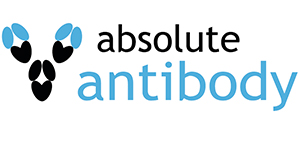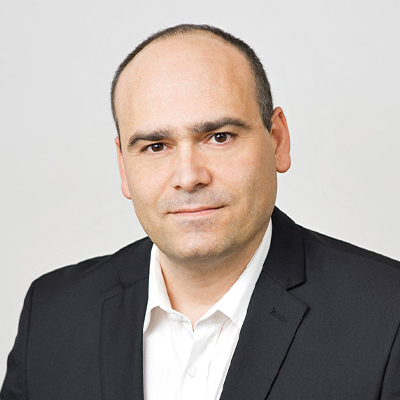Anti-GD2 (3F8)
Anti-GD2 [3F8], Recombinant, IgG1 kappa, Human
Artikelnummer
ABAAb04717-10.3-BT
Verpackungseinheit
1 mg
Hersteller
Absolute Antibody
Verfügbarkeit:
wird geladen...
Preis wird geladen...
CloneID: 3F8
Heavy Chain modification: Fc Silent™
Antigen Long Description: The original antibody was generated by immunizing BALB/c mice with human neuroblastoma cells.
Origin Pub PMID: 22754766
Buffer Composition: PBS only.
Chimeric Use Statement: This is a reformatted human IgG1 Fc Silent Fc Silent™ antibody, based on the original human IgG3 format, created for improved compatibility with existing reagents, assays and techniques.
Uniprot Accession No.: Q9UI17
Specificity Statement: This antibody is specific for the human disialoganglioside GD2, a surface antigen highly expressed on human neuroblastoma cells. The epitope is located at the putative membrane interaction site. This antibody shows strong binding to NB cells and no cross-reactivity to normal human tissues except for human cortical neurons. Furthermore, it exhibits no cross-reactivity to most other gangliosides of those tested (GM2, GD1a, GT1b, GD3, and GQ1b) except GD1b to which it had very low cross-reactivity.
Application Notes (Clone): The original version of this antibody (mouse IgG3) was first shown to specifically bind human GD2 via ICC (Saito et al., 1985; PMID: 2579648). The antibody was used in indirect IF assays to detect the GD2 ganglioside on the surface of neuroblastoma cells and applied in ELISA to screen and quantify GD2 binding. Inhibition assays were conducted to assess its specificity for GD2 over other glycolipids. In thin-layer chromatography (TLC) coupled with immunostaining, the antibody was used to identify and confirm the presence of GD2 ganglioside in cultured neuroblastoma cell extracts. Additionally, complement-mediated cytotoxicity (CMC) assays demonstrated its ability to induce immune-mediated cell death in GD2-expressing neuroblastoma cells, successfully killing 100% of these cells while sparing normal bone marrow cells (Cheung et al., 1985; PMID: 2580625). The antibody was also tested in vivo in a phase I clinical trial, where it mediated antibody-dependent cellular cytotoxicity (ADCC) and complement activation without crossing the blood-brain barrier (Cheung et al., 1987; PMID: 3625258). In a phase II clinical trial, it was used to treat neuroblastoma with minimal residual disease, showing high tolerance and efficacy when combined with granulocyte-macrophage colony-stimulating factor (GM-CSF), though it was less effective against progressive disease (Kushner et al., 2001; PMID: 11709561). The binding affinities of the original mouse IgG3 and chimeric mouse IgG1 and IgG4 variants were measured using SPR, with KD values of 5 ± 1 nM, 13 ± 3 nM, and 14 ± 2 nM, respectively. The direct cytotoxicity against the LAN-1 neuroblastoma cell line was also evaluated in vitro, with EC50 values of 1.9 ± 0.2 µg/ml, 4.5 ± 1.2 µg/ml, and 6.4 ± 1.8 µg/ml for the respective formats. Two humanized versions—human IgG1 and IgG4—were also developed, with the mouse and human IgG1 formats showing significantly enhanced ADCC across seven neuroblastoma cell lines. In vivo testing in athymic nude mice bearing LAN-1 neuroblastoma xenografts showed that the human IgG1 variant had the strongest anti-tumor effect (Cheung et al., 2012; PMID: 22754766). This antibody binds to FcγRII and FcγRIII for neutrophil- and NK-mediated ADCC (Cheung et al., 2012; PMID: 22869886). The antibody's crystal structure was characterized, and its GD2 binding was further evaluated using ELISA and FC assays (Ahmed et al., 2013; PMID: 23696816).
Heavy Chain modification: Fc Silent™
Antigen Long Description: The original antibody was generated by immunizing BALB/c mice with human neuroblastoma cells.
Origin Pub PMID: 22754766
Buffer Composition: PBS only.
Chimeric Use Statement: This is a reformatted human IgG1 Fc Silent Fc Silent™ antibody, based on the original human IgG3 format, created for improved compatibility with existing reagents, assays and techniques.
Uniprot Accession No.: Q9UI17
Specificity Statement: This antibody is specific for the human disialoganglioside GD2, a surface antigen highly expressed on human neuroblastoma cells. The epitope is located at the putative membrane interaction site. This antibody shows strong binding to NB cells and no cross-reactivity to normal human tissues except for human cortical neurons. Furthermore, it exhibits no cross-reactivity to most other gangliosides of those tested (GM2, GD1a, GT1b, GD3, and GQ1b) except GD1b to which it had very low cross-reactivity.
Application Notes (Clone): The original version of this antibody (mouse IgG3) was first shown to specifically bind human GD2 via ICC (Saito et al., 1985; PMID: 2579648). The antibody was used in indirect IF assays to detect the GD2 ganglioside on the surface of neuroblastoma cells and applied in ELISA to screen and quantify GD2 binding. Inhibition assays were conducted to assess its specificity for GD2 over other glycolipids. In thin-layer chromatography (TLC) coupled with immunostaining, the antibody was used to identify and confirm the presence of GD2 ganglioside in cultured neuroblastoma cell extracts. Additionally, complement-mediated cytotoxicity (CMC) assays demonstrated its ability to induce immune-mediated cell death in GD2-expressing neuroblastoma cells, successfully killing 100% of these cells while sparing normal bone marrow cells (Cheung et al., 1985; PMID: 2580625). The antibody was also tested in vivo in a phase I clinical trial, where it mediated antibody-dependent cellular cytotoxicity (ADCC) and complement activation without crossing the blood-brain barrier (Cheung et al., 1987; PMID: 3625258). In a phase II clinical trial, it was used to treat neuroblastoma with minimal residual disease, showing high tolerance and efficacy when combined with granulocyte-macrophage colony-stimulating factor (GM-CSF), though it was less effective against progressive disease (Kushner et al., 2001; PMID: 11709561). The binding affinities of the original mouse IgG3 and chimeric mouse IgG1 and IgG4 variants were measured using SPR, with KD values of 5 ± 1 nM, 13 ± 3 nM, and 14 ± 2 nM, respectively. The direct cytotoxicity against the LAN-1 neuroblastoma cell line was also evaluated in vitro, with EC50 values of 1.9 ± 0.2 µg/ml, 4.5 ± 1.2 µg/ml, and 6.4 ± 1.8 µg/ml for the respective formats. Two humanized versions—human IgG1 and IgG4—were also developed, with the mouse and human IgG1 formats showing significantly enhanced ADCC across seven neuroblastoma cell lines. In vivo testing in athymic nude mice bearing LAN-1 neuroblastoma xenografts showed that the human IgG1 variant had the strongest anti-tumor effect (Cheung et al., 2012; PMID: 22754766). This antibody binds to FcγRII and FcγRIII for neutrophil- and NK-mediated ADCC (Cheung et al., 2012; PMID: 22869886). The antibody's crystal structure was characterized, and its GD2 binding was further evaluated using ELISA and FC assays (Ahmed et al., 2013; PMID: 23696816).
| Artikelnummer | ABAAb04717-10.3-BT |
|---|---|
| Hersteller | Absolute Antibody |
| Hersteller Artikelnummer | Ab04717-10.3-BT |
| Verpackungseinheit | 1 mg |
| Mengeneinheit | STK |
| Reaktivität | Human |
| Klonalität | Recombinant |
| Methode | Immunofluorescence, ELISA, Immunohistochemistry, Functional Assay, Super-Resolution Microscopy, Immunocytochemistry, In Vivo Assay |
| Isotyp | IgG1 kappa |
| Wirt | Human |
| Produktinformation (PDF) |
|
| MSDS (PDF) | Download |

 English
English







